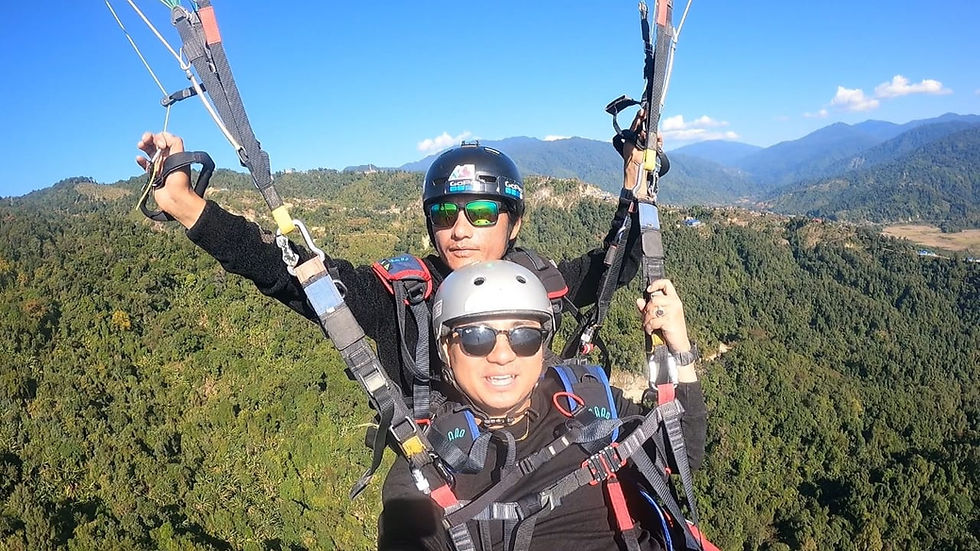Northeast India best time to visit: A Comprehensive Guide
- Umesh

- Jun 29, 2023
- 3 min read
Updated: Oct 18, 2023

Northeast India is a land of mesmerizing beauty, rich cultural heritage, and breathtaking landscapes. Every different season has its own beauty. In this comprehensive guide, we will delve into the three distinct seasons of North East India and provide insights into the best time to visit based on weather, experiences, and local festivities.
Table of content:
Best season to visit Northeast India

Winter Wonderland (October to February):
Winter in North East India is a magical season that unveils a picturesque landscape blanketed in snow. Although the temperatures can drop significantly, this period offers a unique and awe-inspiring experience.
Weather: The weather during winter varies across the states, with higher altitude regions like Arunachal Pradesh and Sikkim experiencing sub-zero temperatures and occasional snowfall. In contrast, lower altitude regions such as Mizoram and Tripura enjoy milder winters with pleasant temperatures.
Significance: Winter is the ideal time to explore the quaint mountain villages and countryside of North East India. The snow-covered plains showcase breathtaking beauty, and the fascinating tribes, vibrant cultures, and diverse wildlife stand out vividly. Don't miss the ethereal winter spots like Roing and Tawang in Arunachal Pradesh, known for their sacred monasteries amidst spectacular natural landscapes.
Highlights: Embark on wildlife safaris in renowned national parks like Kaziranga National Park, where you can spot the magnificent one-horned rhinoceros and the Ganges River Dolphin. Immerse yourself in the vibrant Hornbill Festival, a celebration of indigenous cultures, music, and dance.
Tips: Pack warm clothing including woolen sweaters, scarves, gloves, and a winter jacket. Don't forget to carry moisturizer and lip balm to protect your skin from the cold.

Blissful Summers (March to June)
Summer in North East India offers pleasant weather, clear skies, and blooming flora. It is an ideal time to explore the region's natural wonders, immerse in tribal cultures, and engage in thrilling outdoor activities.
Weather: The climate during summer is variable, ranging from cool to hot depending on the region and elevation. The northern parts enjoy pleasant summers, while lower altitude areas can experience higher temperatures.
Significance: Summer is the perfect season to learn about the unique tribal cultures, visit ancient temples, and savor traditional cuisine. The crystal-clear skies, amber sunshine, and blooming flora add to the charm. Explore off-beat paths and trails to discover hidden gems like Ziro Valley, Jaintia Hills, and Dawki River.
Highlights: Engage in adventure sports such as trekking, hiking, mountain biking, and kayaking amidst the majestic mountains and valleys. Immerse yourself in vibrant festivals that provide insights into the region's tribal culture.
Tips: Carry sunscreen, sunglasses, a hat or cap, and light cotton clothing. Depending on the region you visit, layer up or shed layers to adapt to the varying temperatures.

Lush Monsoons (July to September)
Monsoon in North East India is a tropical affair that transforms the landscapes into a vibrant green paradise. Despite occasional heavy rainfall, this season offers tranquility, lush scenery, and unique experiences.
Weather: Monsoon brings moderate to heavy rainfall and varying temperatures across the region. Higher altitude areas experience cooler weather, while regions closer to the equator remain balmy.
Significance: Monsoon is an excellent time to enjoy the serene beauty of North East India. The hills, valleys, lakes, waterfalls, plantations, and forests glisten with emerald hues. Meghalaya, known as the world's rainiest state, is a must-visit during this season to witness the magic of nature.
Highlights: Explore heritage bungalows, tea plantations, and enchanting resorts amidst the lush greenery. Indulge in spa treatments, take scenic drives, and witness the raw power of nature's beauty.
Tips: Prepare for occasional storms, landslides, and road blockages. Carry an umbrella, raincoat, or windcheater, waterproof backpack, and mosquito repellent. Pack extra pairs of dry clothing and protect electronic gadgets in plastic bags.
Conclusion
North East India is a treasure trove of natural beauty, cultural diversity, and unique experiences. Choosing the best time to visit depends on your preferences and the type of experiences you seek. Whether you prefer the winter wonderland, blissful summers, or lush monsoons, North East India will captivate you with its charm and leave you with memories to cherish. Plan your trip accordingly, immerse yourself in the region's wonders, and get ready to explore one of India's most captivating regions.





Comments